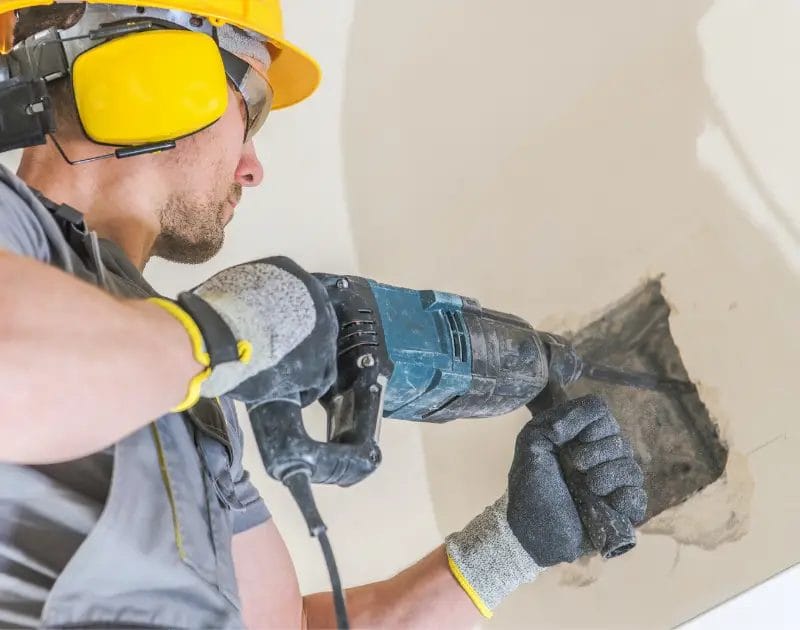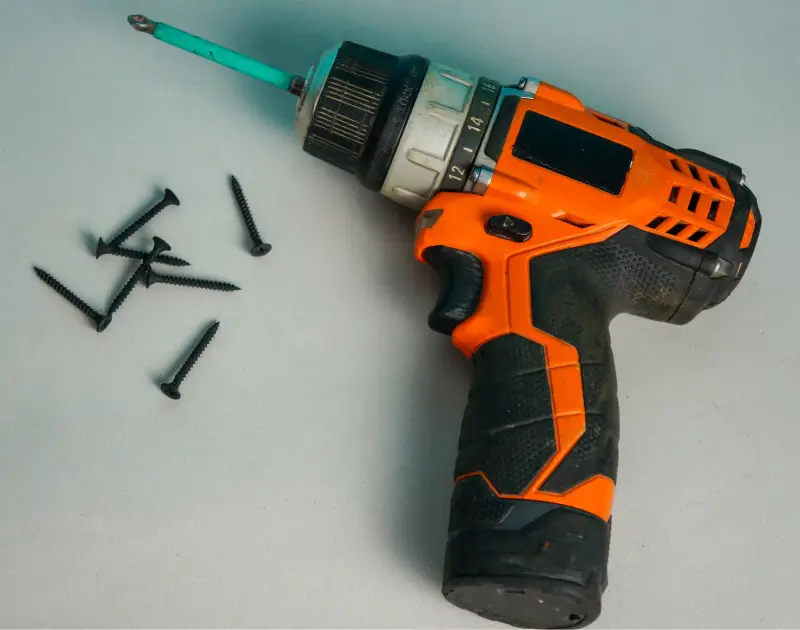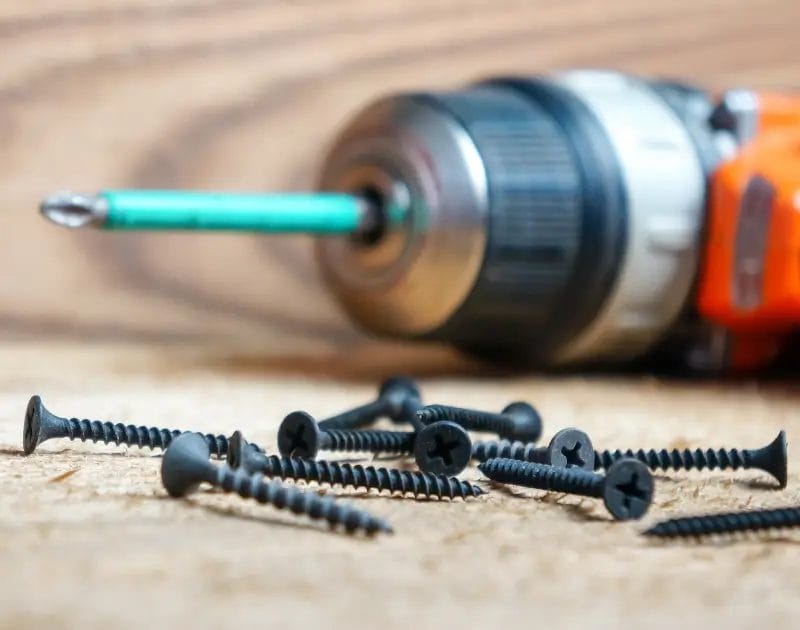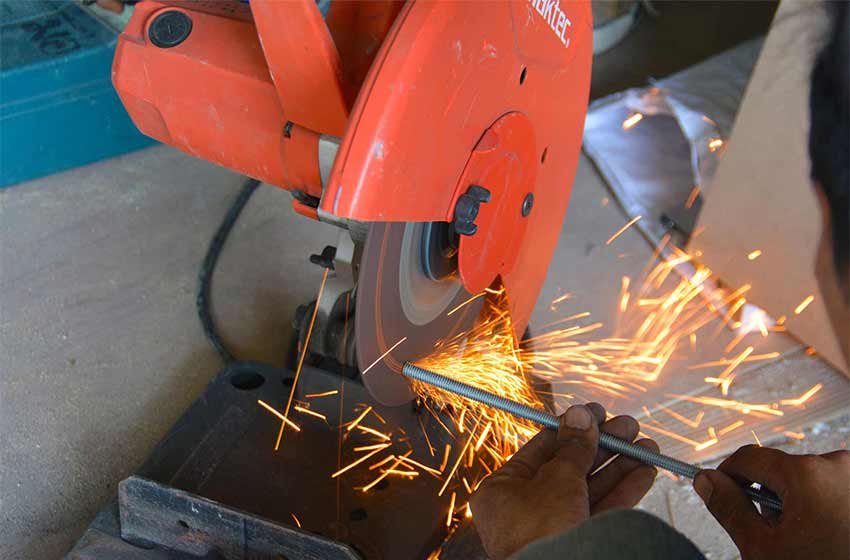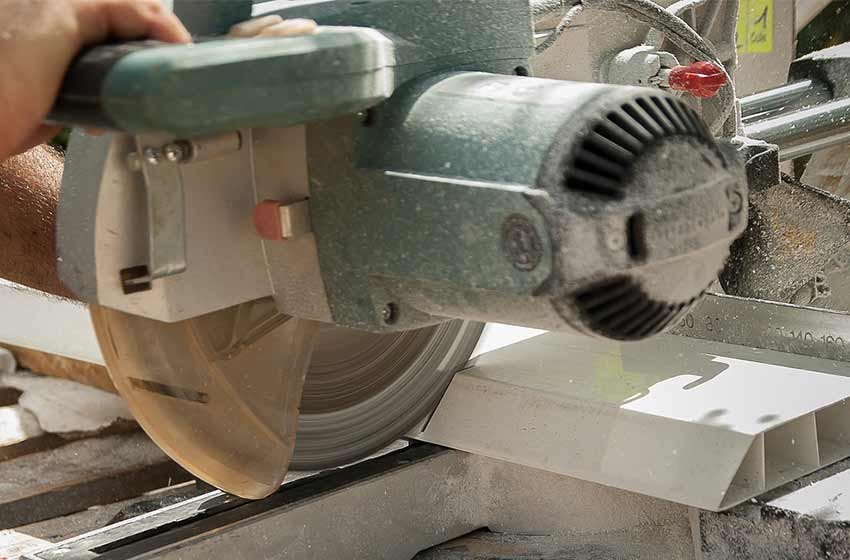Our Guide To Screw Into Concrete Without a Hammer Drill
It can be disheartening to start your next big DIY home project, only to realise it involves screwing/drilling into concrete, and you don't have a hammer drill.
Well, good news for you, you can still screw or drill into concrete without a hammer drill, it just might take some more time and patience and you will need to make sure you ditch the regular drill bits for a masonry drill bit set to do the job.
To find out more about why hammer drills are better for screwing into concrete, why you need concrete drill bits and our step by step guide to drilling into concrete without a hammer drill we have put together our best guide below with all the tips and tricks you need.
Hammer Drill Vs Regular Drill
If you are new to the game of drilling into heavy-duty materials, then you might not quite know why a hammer drill is more suited to this job than a regular drill.
This is because hammer drills are set up like a regular drill but with the addition of a hammer function including pulses strong forces to and fro, allowing you to screw and drill through materials such as concrete, tiles, marbles and bricks with ease.
Hammer drills can also be used to drive screws into tough materials and as a regular drill due to them coming with various modes.
Regular drills on the other hand are not typically equipped to be used for screwing on surfaces such as concrete unless you have the right drill bit to make the hole for the screw, to begin with.
We have listed out the benefits of using a hammer drill over a regular drill below.
- Easier to use - Hammer drills are designed for high impact screwing so will be much more comfortable and easier to use in these situations where you have to drill through tough material.
- Great for exterior housework - Exterior housework cannot be done without a hammer drill as it is mostly made out of brick making it essential in your house project tool kit.
- Quicker - Hammer drills will be able to screw through concrete much faster than your standard drill would do saving you time.
- Versatile - These types of drills allow you to screw drive and drill regularly without the hammer function if needed making it a very versatile tool.
Why You Need To Use Masonry Drill Bits
Trying to screw materials such as concrete with a regular drill type bit is not going to work, the bit will likely break off easily and become dull fast due to it not being able to handle the tougher surfaces.
Masonry drill bits are excellent to use with your regular drill for screwing into concrete, they are typically made up of a material called tungsten carbide and have little chance of breaking or snapping unlike regular drill bits do.
It's important to make sure your regular drill has a variety of masonry drill bits to use for screwing into concrete as during the drilling process you will need to use different sizes and larger masonry drill bits to achieve the sized hole you want without damaging the drill or the concrete itself.
You should additionally consider the type of screw you want to use in the hole you have made, we have listed the three types to consider screwing into the concrete below.
- Hammer set-anchors - Hammer set anchors are great for fastening a hole made in concrete to enable your screw to slot in, they are the best for hanging lightweight objects.
- Soft metal shield - These types of fasteners are very old school but can support pretty heavy objects if they are installed into the right hole size.
- Concrete screws - We recommend using a concrete screw after drilling your hole with a masonry bit, this is because they are easy to drive in without the need for a fastener.
How To Screw Into Concrete With a Regular Drill (Step By Step)
Now we know all the background info about what you need for your concrete drilling process with a regular drill, let's dive right into the details about how to do it for the best result possible and to avoid damaging your rotary drill.
- Step one - Grab your variety sized masonry drill bits for your type of drill going from a small size to a large.
- Step two - Start with the tiniest masonry drill bit first to screw a pilot hole in the concrete, this works best as the smaller types of drill bits have more torque to start screwing with, after this you can then switch to larger masonry drill bits to widen the hole to your desired size.
- Step three - Cool down the rotary drill by splashing the hole with water and the drill bit too, this stops the drill bit attached from overheating as regular drill types are not meant for this heavy-duty work.
- Step four - When faced with blockages use a nail and hammer to break it up, you can replicate the hammer motion when concrete drilling too by moving the regular drill gently back and forth while making the starter hole.
- Step five - Don't try and screw into concrete too fast and avoid putting too much pressure on the regular drill, doing so can burn out the motor and ruin the drill bit due to overheating.
- Step six - After making your hole, blow out any dust with compressed air to prepare it for driving in your concrete screw, make sure the hole is 1/4-inch deeper than the screw length.
- Step seven - Drive in the screw with your drill and you are ready to hang your object!-
Tips For Drilling Into Concrete Without a Hammer Drill
The task of drilling into concrete without a hammer drill is not easy, even with our steps above, you need to make sure that you don't damage the power tools motor when used with concrete drill bits.
We have bullet-pointed a few tips to consider below if it's your first time screwing into concrete with a regular drill.
- Use a high-quality array of masonry drill bits - The quality of your changeable drill bits do matter, try and get high-quality carbide-tipped masonry drill bits as they are much less likely to break than cheap bits on the market.
- Consider the age of the concrete - Older concrete will be much harder to screw through than new concrete, for older concrete you might have to use a hammer drill for the extra impact power.
- Go slow when drilling - Use a medium speed rate for screwing into concrete, never try and go at high power as this will liken the chances of your regular drill overheating.
- Consider renting a hammer drill - Although it is very possible to screw into concrete with a regular drill, some material can just be tough, and instead of ruining your drill, you might be better of just renting or borrowing a hammer drill for the job.
Frequently Asked Questions About Screwing Into Concrete Without a Hammer Drill
Will drilling concrete cause cracks in the material?
On the rare occasion is it possible to crack concrete when drilling it, especially if the concrete is old, ensure you don't apply too much pressure on your regular drill to avoid this.
Can I drill through brick without a hammer drill?
Yes, following a similar process above you can drill through brick too with a regular drill as long as you use a high-quality carbide-tipped masonry tip for the job.
Is it possible to use a hammer drill as a regular drill?
Hammer drills can be used as regular drills and as a driver thanks to their different modes which allow you to switch between according to the type of task, some rotary drills also have a hammer function but not all.
Do I need to wear PPE when drilling in concrete?
Yes, when screwing or drilling in concrete you must wear some safety equipment such as a mask and goggles to prevent debris from flying into your eyes as you make a hole.
How do I insert the screw after drilling?
After making your hole you can then position the anchor over the hole and push it in as far as it can go, take a hammer and tap the anchor until it is fully enclosed in the concrete, you can then insert the screw to the depth that your desire and tighten accordingly in the anchor, do not tighten too much as this can cause the concrete to split.
For concrete screws just simply drive in the screw according to the manufacturer's suggestions.
Why is a pilot hole important?
Pilot holes are very important for screwing into concrete as they allow you to make a hole without the concrete splitting and act as a guideline for keeping the drill balanced and straight while you make the hole in the material.
Final Words
To conclude, it is possible to screw into concrete without a hammer drill on hand as long as you use your regular drill with a high-quality masonry drill bit and have a range of sizes on hand for the drilling task. You should never force your drill into concrete if it gets stuck or uses it at a high speed as this could cause the device to overheat.
If your material becomes too tough to screw, then a hammer drill might be worth renting for your project rather than ruining the material or drill you have.

